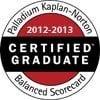SAP ERP Project Work Scheduling Management Best Practices
As a globe trotting SAP project manager, I am a SAP ERP implementation project manager who frequently has to work as a contract project manager focused on ERP Consulting Projects. This has several implications that usually fall into one of several categories:
- Need to learn the internal structure of the company.
- Need to learn the ERP implementation project management approach envisioned by the customer, if any. This is critical to developing my ERP project plan.
- Need to plan and schedule the ERP implementation project plan work in the most effective manner.
ERP Implementation Projects Are Similar Across Technologies But Not Identical
There is no shortage of opinions on this, but I have to say, that before I specialized in SAP ERP Project Implementations, I did Oracle project implementations and before that, aircraft depot maintenance projects with stops along the way with i2 Technologies Supply Chain Management projects and now Hubspot Inbound Marketing and Sales projects.
Differences Between Project Implementation Methodologies
There are more similarities than differences in each of the different types of projects, mostly being that SAP, if done right, is closer to a repeatable process than say, overhauling a C-130 or B-52. There is, however, one universal constant - there is no perfect plan. So here is what I have learned when it comes to scheduling and executing the work on a ERP Implementation Project:
 Learn to Use the Relay Racer Model of Work Scheduling
Learn to Use the Relay Racer Model of Work Scheduling
Project Preparation Phase Is Critical
SAP Project Implementation Success is Path Dependent
- SAP ASAP has a project preparation phase at the beginning of the project.
However, in all cases, there will have been a project before this project to get the sale. Look for the Sales to Consulting Hand-Off Checklist for background information you will need. - Any of the Big 4, i.e., Accenture, IBM, CapGemini, KPMG, also have a preparation stage, though they vary in what is considered adequate preparation
Project Management System Design
Proper Technology Stack Plus Methodology Required
- This goes well beyond just using the PMP guidelines.
- You need to decide on what tools you will use and budget for them accordingly.
You need to agree with the customer project sponsor what status reporting you will do, what frequency this status reporting will be delivered.
You will need to set up some rules of thumb regarding task durations, relationships and how to manage and integrate 3rd party or external projects.
If you get it right, project status will find you and you can concentrate on managing your project, not chasing status.
Unified ERP Implementation Schedule
All Teams Must Sing From the Same Sheet of Music
- You will also need to decide what you won’t do when building your ERP implementation schedule.
For instance, you can’t have different project team members using different project management tools or none at all.
You have no hope of completing the project on time or budget unless everyone is using the same suite of tools and working from the same set of assumptions and performance expectations.
This scenario usually arises when 2 or more of the major Systems Integrators are involved in the same project, perhaps one is doing the hardware install or the EDI implementation while the other one is doing the SAP functional consulting. Both will insist on their own way.
If you, the project manager, do not bring them all together into one overall project management system which YOU OWN, then YOU WILL FAIL.
Project Buffer Management
Buffers Are Not Optional - They're a Must Have
- If you plan on using the critical chain project management approach, which I do, mostly, you will have to make some major assumptions with regards to establishing both feeding buffers and project buffers.
But it can be done.
Early Problem Identification
Perhaps The Single Best Way to Move Things Along
- Generally, you should try to get the problems to be solved in front of the SAP consultant as fast as possible.
Effective Teamwork Approach
Building a Cohesive Team is an Art
- To accomplish number 5, above, you will need to get everyone to work in "relay racer' mode.

This means running with the work as fast as possible and then physically handing off to the next person with a positive chain of control in a smooth fashion. When you don't get this behavior, it is usually because the customer project team member is not 100% focused or available to your project as required.
Adjust your plan accordingly!
Accounting For Dispersed Locations
Zoom Just Doesn't Cut It
- If you have project team members, customer key business users or Subject Matter Experts (SMEs) and 3rd parties all located in various locations, you will have to add considerable time to all task completion estimations.
If the project budget permits, get a person on your team to help you track status on these external project team members. If you find that you have this situation, and no budget is in the SOW to provide this additional resource, submit a change order
How To Get Accurate Task Estimates
A Super Secret Technique Revealed
- Use actual start and actual finish dates in your project tracking.
If you just mark a task as 100% complete and don’t record this information, you will never know if your task estimates are accurate and you really lose a lot of information about your project’s progress.
Don't forget to baseline your task as well. Trust me on this, you will thank me later.
In a multi-phase template roll-out, this can help in the enterprise lessons learned information gathering exercise you need to do Post Go-Live.
Get Resource Commitments, Don’t Assume Them
People Will Say Yes To Get You Off Their Backs
- When you build your tasks list and assign resources to the task, you have to spend a lot of time with each resource, i.e., people, ensuring they can actually accept the responsibility and commit to the delivery schedule.
This is another reason you MUST record actual start dates. That's one of the easiest ways to tell if a resource isn't really committed to your task.
Avoid Multi-Tasking To Improve Work Scheduling Effectiveness
Switching Time Is No Joke
- If you have a resource that works on two different parts of your project, and they overlap, don’t forget the CCPM approach.
In a nutshell, do whatever you can to schedule the work to eliminate multi-tasking.
It takes about 45 minutes for someone to get back on task when they are jumping around from one task to another due to multi-tasking.
Remember, this is the minimum known switching time on IT projects. If you are talking other types of projects, such as refinery refurbs, aircraft depot overhaul, relocations, etc., this switching time can go through the roof.
Add Time In The Work Schedule For Language Differences Among Team Members
Effective Communication Takes Time and Effort
- You need to add considerable time to all meetings and work estimations when the work language is a 2nd or 3rd language to more than 50% of the work package execution teams.
Roughly translated, you may have 2 of the Big 4 or any other combination of service providers performing “external projects” that are key to your overall project. They will be bringing together multiple nationalities, say French, Indian, German and American, and while all are working in English, you will have to budget extra time for the ‘signal-to-noise’ ratio communications efficiency loss.
It simply takes longer to talk through the issues and arrive at a conclusion.
Intentional Leadership Style Variations
Practice Active Listening To Achieve Success
- As a project manager, you will have to vary your leadership style depending on when and where you’re at in the project delivery cycle.
This means you will have to be more directive than usual (like that is even possible), and your project plan will actually have to be more precise and more loose at the same time.
When YOUR project schedule is under the gun, this is where you find out if the people working on your team know how to follow.
Project Status Reporting Serves as Your Lighthouse
Clarity is Paramount - And Tough to Achieve
- Project status reporting is as important to the members of the entire team as it is to the project management team. So find a way to share it.
Make Project Plans Physically Visible To ALL
In light of the above, I highly recommend you print out your project plan on wide format paper, and post a copy of it where everybody on the team can see it all day.
There is just something about having a graphical view of the whole project versus just a little view of a small segment of it on a PC screen.
The bigger the better.
Conduct your meetings using the print out. Use large fonts. If using multiple delivery locations, it won’t be possible to keep up-to-date implementation project plans at each location but it is still worth having an initial baselined plan printed out and up on the wall at every location. I also recommend you rerun your plan and print it out for all to see whenever a change request is signed and approved. Make sure you run the revised version and show the original plan Baseline vs Current.
Techniques for Scheduling and Executing ERP Implementation Project Work
There are, no doubt, many other techniques to keep in mind when scheduling and executing ERP Implementation Project work, but I find these are critical. But, if you want to go live to the day and hour (always my goal, if not always the outcome), these techniques will play an important role in making that happen. Want to know some additional helpful ERP project management best practices and techniques for implementing SAP. Then you might want to download our guide to SAP Project Management.
People Who Read This Also Read:
- 10 Advanced SAP BW Project Estimation Techniques
- 10 Critical Chain Project Manager Tips
- 10 Key Infrastructure Tips For SAP Implementation Projects
- 10 Reason You Need A SAP Project Review
- How The Consulting Rate Calculator Works
- 5 Surprising Reasons Enterprises Don’t Use An ERP
- Leverage SAP BW to Increase Supply Chain Inventory Accuracy
- BusinessObjects Explorer Best Practices
About SAP BW Consulting, Inc.
SAP BW Consulting, Inc. provides comprehensive SAP solutions, including SAP Business Intelligence (BI) and SAP Business Warehouse (BW) consulting, SAP ABAP development, and project management. Our services also include a 1099 Contractor Invoicing and Payment Management System, Salesforce consulting, and Balanced Scorecard consulting for strategic planning.
As HubSpot Marketing and Sales Partners, we specialize in Google Ads, Facebook Ads, LinkedIn Ads, Account-Based Marketing, Content Marketing, and Ecommerce solutions, including Shopify.


